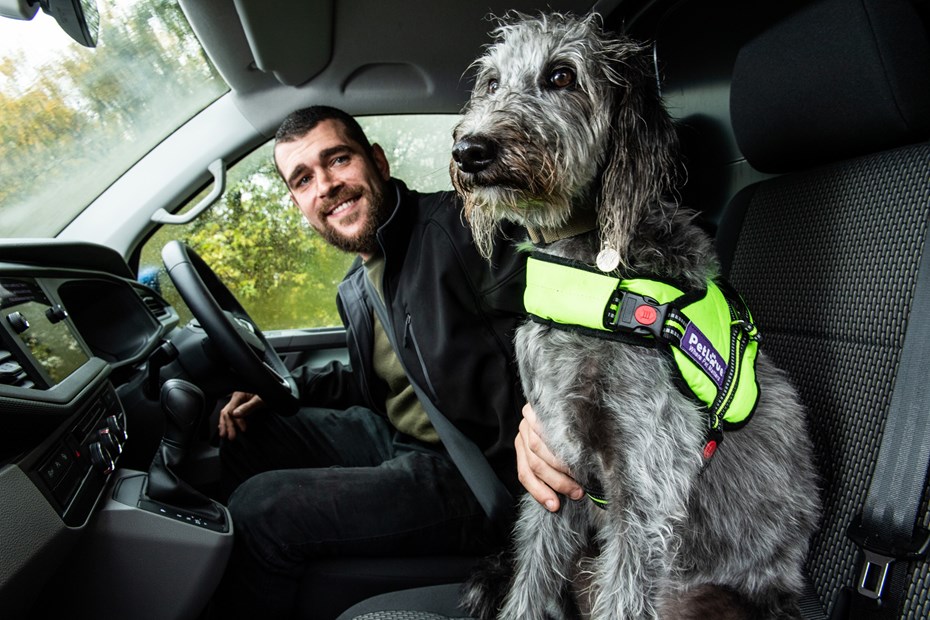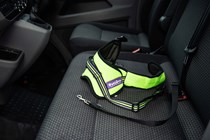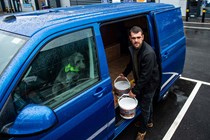Are you a plumber with a pooch? A builder with a bulldog? According to research by Volkswagen Commercial Vehicles, 41% of van drivers take their dog to work with them – which is probably great news for mental health and animal welfare. However, of those 41%, almost a third (29%) are risking a massive £5,000 fine by not safely securing their pet properly when travelling.
What’s more, if you have an accident and your dog isn’t secure, it could invalidate your insurance. Keep reading to find out more.
>> SIgn-up for the Parkers Vans and Pickups newsletter
Do dogs need to be belted in when travelling in a van?
According to the Rule 57 of the Highway Code, pets must be ‘suitably restrained so they cannot distract you while you are driving or injure you, or themselves, if you stop quickly.’
Fail to follow this advice, and even if they don’t cause an accident your dog could still get you into a lot of trouble.
What’s the fine for failing to restrain a dog in a van?
The basic level of offence for failing to properly secure your dog would fall under ‘driving without proper control’ – which carries a fine of up to £1,000.
However, VW points out that this can be stepped up to ‘careless driving’, which not only means up to nine points on your driving licence but also an increase in the maximum fine of up to £5,000.
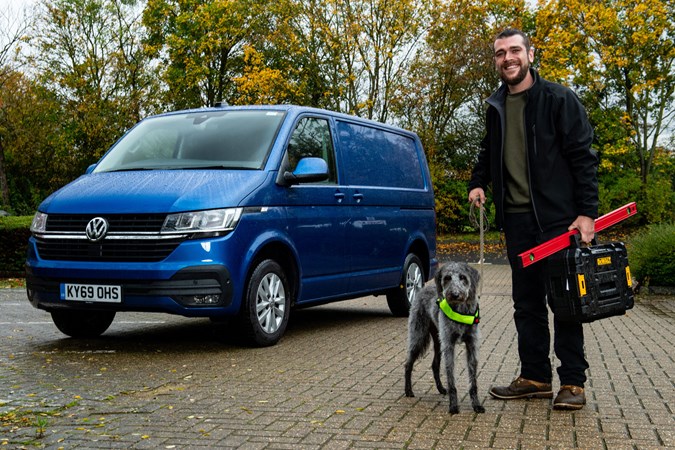
Your insurer could also use this as an excuse to invalidate your insurance – meaning you could find yourself footing the bill for crash repairs and other costs as well.
How do you secure a dog in a van?
If you are planning to travel with your dog in the van, they can be restrained in a number of ways, ranging from a harness that attaches to the seatbelt (make sure it’s appropriately and comfortably sized for your animal) to a substantial dog cage.
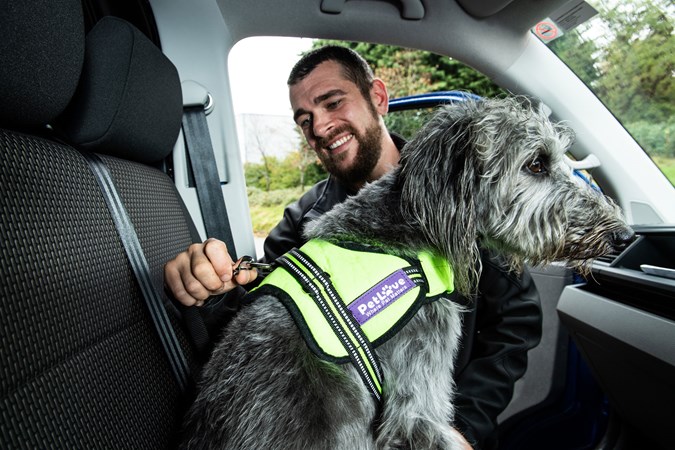
Even a pet carrier will be fine, as long as that too is properly secured. In some vehicles – such as car-derived vans and commercial 4x4s, for example – they can also be restrained behind a dog guard in the boot.
Where can I get more advice about travelling with a dog?
The Dogs Trust has a full checklist if you want to take your dog with you, covering pet comfort and compliance with the latest regulations:
- > Safety first: Dogs must be secured in a comfortably-sized seat-belt harness, pet carrier, dog cage or in the boot behind a dog-guard. These must be fitted securely and positioned in such a way that your dog can’t hang out of windows or interfere with the driver
- > Make the van an enjoyable place to be: If they aren’t used to travelling, use your dog’s favourite treats to reward them for being calm whenever they’re near the van, including just walking around it to begin. Always travel with water and never leave your dog alone in the van
- > Gradually introduce your dog to travelling in the van: Dogs need to get used to the sound and movement of the van slowly. To help them associate these changes with good things happening, give your dog extra tasty treats whenever the van starts up and starts to move
- > Acclimatise your dog to van journeys: Start with short, familiar journeys that are slow and gentle and will allow your dog to get used to van travel in a positive way. Having a friend your dog knows and likes with you can be helpful, as they can comfort the dog if required during the journey
Volkswaggin’ has also put together this short video, recapping the info above.
Any other dog in van info?
Well, according to VW’s research, men are more likely to take their dog to work than women, while in terms of region, van drivers from London and Northern Ireland are most likely to be travelling with their pet. Those from East Anglia are least likely.
Commenting on the research, Volkswagen Commercial Vehicles’ head of marketing, Kate Thompson, said: ‘After such an extended period at home last year, we know that, now more than ever, van drivers don’t want to leave their dogs at home or with dogsitters when they go to work.’
She added: ‘It is important to be aware, however, of the risks attached whether it is distractions while driving and near misses or the possible fines attached to driving with unrestrained pets. We aim to work with our customers so they can get back on the road safely.’
Also read:
>> More than a third of van drivers considering an electric van
>> Volkswagen van reviews on Parkers Vans and Pickups
>> More about van insurance on Parkers
Just so you know, we may receive a commission or other compensation from the links on this website - read why you should trust us.


